 September
22
September
22
Tags
The Musical Brush of M. K. Ciurlionis
 On the 22nd of September 1875, Lithuanian painter, composer and writer Mikalojus Konstantinas Čiurlionis was born in Senoji Varėna, the Russian Empire. Čiurlionis contributed to symbolism and art nouveau at the turn of the century and is seen as one of the earliest experimenters with abstraction in European art. The majority of his paintings are housed in the M. K. Čiurlionis National Art Museum in Kaunas, Lithuania and his art has had a profound impact on modern Lithuanian culture.
On the 22nd of September 1875, Lithuanian painter, composer and writer Mikalojus Konstantinas Čiurlionis was born in Senoji Varėna, the Russian Empire. Čiurlionis contributed to symbolism and art nouveau at the turn of the century and is seen as one of the earliest experimenters with abstraction in European art. The majority of his paintings are housed in the M. K. Čiurlionis National Art Museum in Kaunas, Lithuania and his art has had a profound impact on modern Lithuanian culture.
“After leaving his picturesque birth village of Drushkininkai, sought throughout his life to find an intellectual community supportive of his synaesthetic approach to music and painting. Neither his student years in Plunge, Warsaw, and Leipzig, nor his adult sojourns in Vilnius, Warsaw, St. Petersburg, and Drushkininkai brought him success commensurate with his promise, in part because he could not adapt to the regimentation of those academic institutions that did offer him positions; furthermore, his loyalties were torn between music and painting. (…) Ciurlionis’s personal struggles with poverty and illness, difficulties were balanced by the love and support of his wife, Sofija Kymantaite, a writer and activist in the agitation for Lithuanian cultural independence. (…) a “key representative of Baltic and East European Modernism” influenced by the feverish artistic climate of the fin de siecle.
Ciurlionis, who began to draw in 1901, turned increasingly to painting in the last decade of his life. He enrolled in 1904 in the Warsaw Academy of Fine Arts and participated in several early exhibits of Lithuanian art in Vilnius. His paintings reflect what Bowlt describes as the “Russian symbolist credo,” including a search for the “inner sound” of the universe, evocation of primitive, internal rhythms, experimentation with spatial resolution, depictions of the theme of flight, use of oriental motifs, and abstraction of the physical world into the psychic.” (Carol Bailey Hughes, review of Mikalojus Konstantinas Ciurlionis: Music of the Spheres by Alfred E. Senn; John E. Bowlt; Danute Staskevicius, in Slavic Review, Vol. 46, No. ¾, Autumn – Winter, 1987).During his short life, Čiurlionis composed about 400 pieces of music and created about 300 paintings, as well as many literary works and poems. There was a powerful musical-pictorial crossfertilisation in his work; the majority of his paintings were created in tempera on paper or cardboard and many formed sequences observing a ‘musical’ logic (as a counterpart to the ‘pictorial’ logic of the musical compositions). He also gave many of his paintings musical titles, often grouping them in four-movement ‘sonatas’ with titles such as ‘Andante’, ‘Scherzo’ or ‘Allegro’. Sometimes he explicitly represented musical processes in painted fugues (though more naturalistic than the more abstract painted fugues by Kupka or Klee).
“There are two ways to view this synthesis of music and painting. In the first case, the synthesis of the two arts occurs in the perceiver’s mind. At the opera, for instance, the scenery and the music simultaneously exert an influence upon the spectator-listener, yet they remain two independent spheres. A second way of understanding this synthesis applies to cases in which the visual and musical arts are designed to penetrate one another and form a compositional unity at a qualitatively new level, resulting in the simultaneous perception of both parts. The degree of synthesis depends upon the degree of interpenetration of the parts. (…) As V. Ivanov, the symbolist poet and theoretician, put it, “the pictorial treatment of the elements of visual contemplation according to a principle adopted from music-that is what we consider to be his method”. In other words, the form-creating functions of the two arts in Ciurlionis’ work, while interacting with and interpenetrating each other, make a qualitatively new unity, which is the synthesis of music and painting at the level of compositional thought.” (Vladimir M. Fedotov, ‘Polyphony in the Paintings of M. K. C̆iurlionis’, Leonardo, Vol. 28, No. 1, 1995).
“The preoccupations of Late Romantic musical composition may in themselves have predisposed Ciurlionis towards  incorporating ‘abstract’ elements in his work as a painter, but in a way that he did not perceive as especially art-historically significant or worth publicising. Far more research is needed, however, on the formal (as well as emotional) inspiration that an incipiently ‘abstractionist’ Ciurlionis may have derived from his parallel engagement with the visual (as well as musical) traditions of the Lithuanian vernacular, in particular with regard to colouring, patterning and ornamentation.” (Elizabeth Clegg, review of Ciurlionis: Paris, in The Burlington Magazine, Vol. 143, No. 1176, Mar., 2001).
incorporating ‘abstract’ elements in his work as a painter, but in a way that he did not perceive as especially art-historically significant or worth publicising. Far more research is needed, however, on the formal (as well as emotional) inspiration that an incipiently ‘abstractionist’ Ciurlionis may have derived from his parallel engagement with the visual (as well as musical) traditions of the Lithuanian vernacular, in particular with regard to colouring, patterning and ornamentation.” (Elizabeth Clegg, review of Ciurlionis: Paris, in The Burlington Magazine, Vol. 143, No. 1176, Mar., 2001).

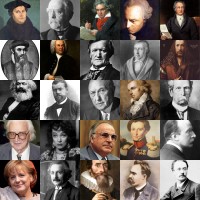


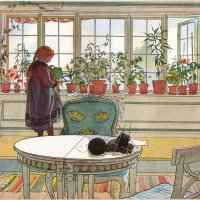

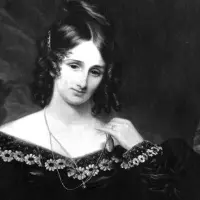
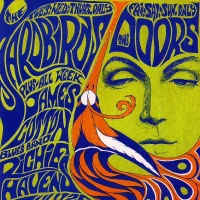
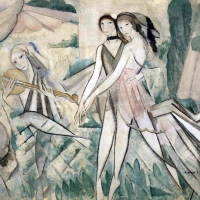
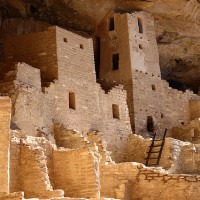

Really interesting. Art and music consistently inspire each other. -Jennie-
LikeLike
Wow, glorious stuff! I’d not heard or seen any of this before. I’ve got some researching to do tonight!
LikeLike
Lovely! ♥ I really admire M. K. Čiurlionis, thank you for this share!
LikeLike
Pingback: Art Nouveau Music – Art Coronium